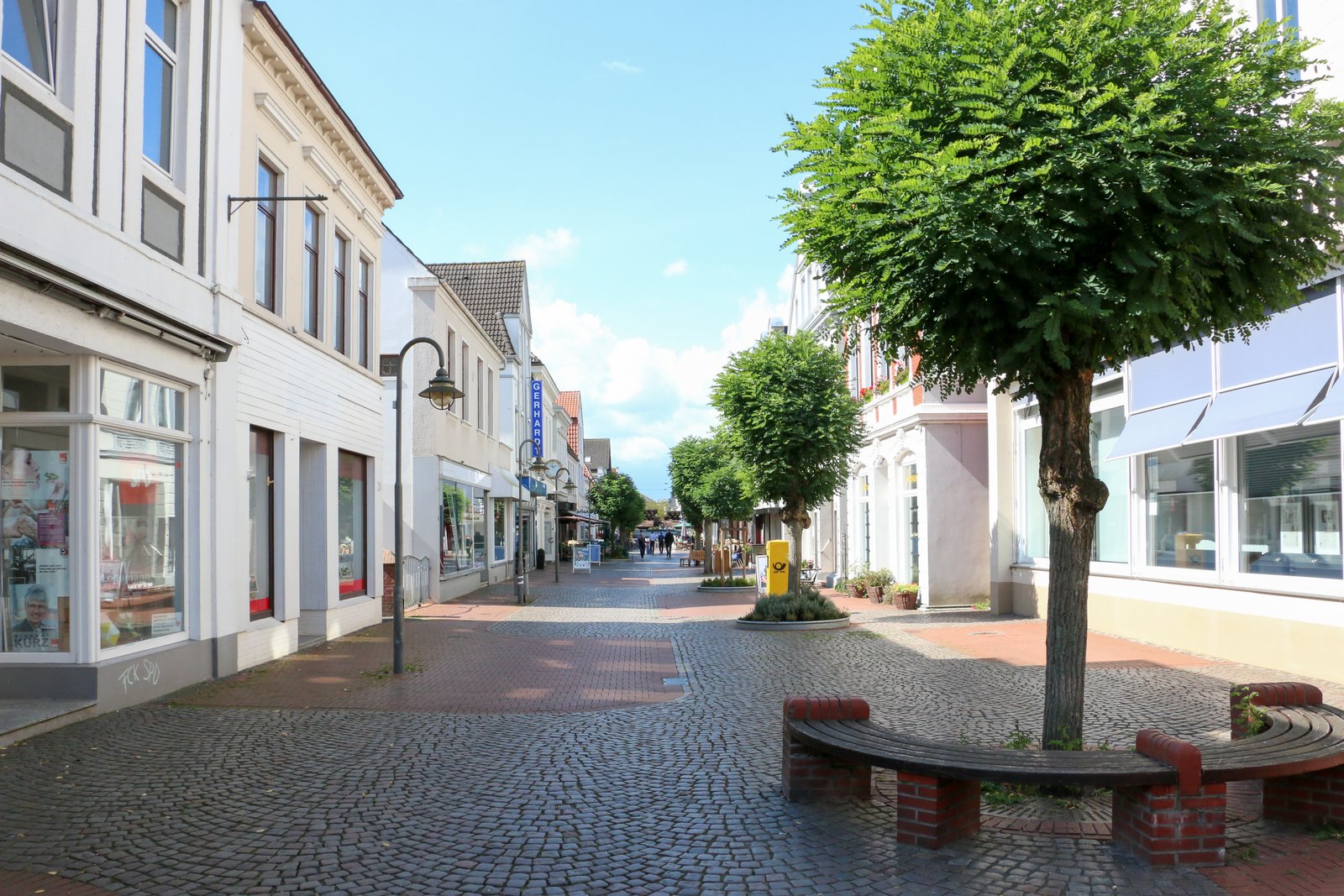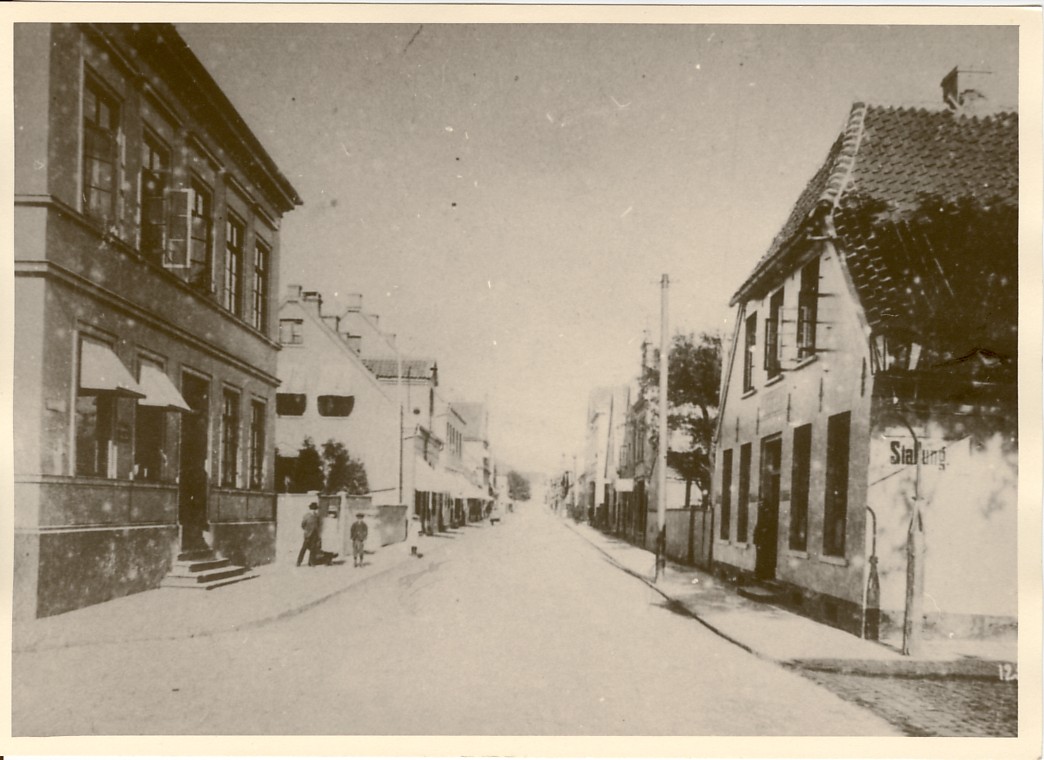
Bewerten
7899d062-d77a-42a0-ae18-b76f17ba3b63|0|.0|96d5b379-7e1d-4dac-a6ba-1e50db561b04
Between 1780 and 1803, the regional economy boomed. The upturn caused by harbor business offered many new opportunities for earning money. The high price of real estate properties, on the other hand, discouraged many people from settling in the area. As a result, Duke Peter Friedrich Ludwig von Oldenburg (1755-1829) decreed that land parcels between the Middle Dyke and the old street Heerstrasse be publicly purchased, and this led to the presence of more affordable properties along the so-called “Plan Street C” which led from the pier straight into the hinterland. This “Plan Street C” evolved into the “Breite Strasse” (literals “Wide Street”). Simultaneously, the “Plan Street G” and the later “Lindenstrasse” came into being. The properties were enormously popular. In 1793, Brake had a population of 850 residents. In the following 20 years, this figure was doubled.
Insufficient Infrastructure
 Brake, setllement development
Brake, setllement development
1796
The inner city of Brake is the result of targeted urban planning. Between 1780 and 1803, the boom of maritime trade along the Weser led to a bustling atmosphere. Brake benefited from the silting of the Weser towards Bremen, the deep channel of the river ended here. Thus, Brake concentrated its efforts on the “Sollern”, the intermediate storage of ship´s goods for Bremen´s merchants until their further transport via barges or small coastal sailing ships having minimal drafts. Nevertheless, the infrastructure Brake soon proved to be incapable of responding to the rising demand. With the exception of a few merchants and ship owners, such as Müller, Gross, Gräper and Claussen, no craftsmen and businessmen catering to the needs of the ships initially settled in Brake. This was also a consequence of the high real estate prices which hardly any handworker could pay.
The Duke gets involved
 New Facility - Brake 1816
In order to create affordable building land, which was desperately sought after at the time, the Duke Peter Friedrich Ludwig von Oldenburg (1755 - 1829) got personally involved. Subsequent to the death of the widow Bödeker, he purchased her compound and thus enabled the ship carpentry master Hinrich Oltmanns to build a shipyard and a residential house in Brake. Additional land was purchased. The Central Administration of Oldenburg divided the land into 37 parcels in the spring of 1798 which had to be built up according to specific regulations. The so-called “New Facility” was now open for settling.
New Facility - Brake 1816
In order to create affordable building land, which was desperately sought after at the time, the Duke Peter Friedrich Ludwig von Oldenburg (1755 - 1829) got personally involved. Subsequent to the death of the widow Bödeker, he purchased her compound and thus enabled the ship carpentry master Hinrich Oltmanns to build a shipyard and a residential house in Brake. Additional land was purchased. The Central Administration of Oldenburg divided the land into 37 parcels in the spring of 1798 which had to be built up according to specific regulations. The so-called “New Facility” was now open for settling.
The New Complex
Of particular importance for the authorities was the internal and external development of the public and commercial buildings as well as the residential houses along the street Planstrasse C, today known as the Breite Strasse. It comprised, together with the street Planstrasse G, today known as the Lindenstrasse, a street crossing which finally served as the center of Brake. From this location, Brake developed towards the west and the south. The actual center came into being, however, in 1820 along the pier. As early as 1815, the properties had become so expensive that the authorities sold the Office Building and re-located its domicile to the Breite Strasse.
 The "Breite Straße" around 1900.
The costs for the acquisition of the construction site in the New Facility and for paving the streets (with boulders from the Delmenhorster Geest) were the buyers of the parcels. Nevertheless, the long-established citizens initially greeted the newly arriving craftsmen, shippers and merchants with a certain degree of mistrust. "These people coming from all nations, often wanting to know everything, except for matters relating to the parish and not even recognizing its boundaries”, a description from 1832.
The "Breite Straße" around 1900.
The costs for the acquisition of the construction site in the New Facility and for paving the streets (with boulders from the Delmenhorster Geest) were the buyers of the parcels. Nevertheless, the long-established citizens initially greeted the newly arriving craftsmen, shippers and merchants with a certain degree of mistrust. "These people coming from all nations, often wanting to know everything, except for matters relating to the parish and not even recognizing its boundaries”, a description from 1832.
After the devastating storm surge of the 3rd and 4th of February 1825, the Administration of Oldenburg prohibited the construction of houses outside of the dikes. An exemption was granted only to wealthy merchants who were able to fortify their houses with particularly solid foundations, among them the consul and wine merchant James Groth. The Breite Strasse was characterized by the largest houses with the most storage rooms and stables. Nevertheless, the Breite Strasse ascended to the status of a main and business street only after the avenue leading towards Oldenburg was paved in 1850, and this was a truly significant development for the approximately 2,300 citizens of Brake at the time.
Experiences in the museum
Duke Peter Friedrich Ludwig left his traces in the entire region. In Brake he had the first dolphins installed, which led – together with the Neue Anlage – to a rapid development of both the harbor and the settlement. His son, August I, and his grandson, Peter II, also left their mark on the region. Learn at the Telegraph how sympathetic to the harbor town of Brake Oldenburg’s rulers were
Maritime Museum - Telegraph, Kaje 8, 26919 Brake - Ground floor
